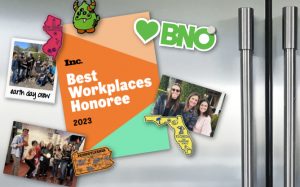Tom Burrell and Marlboro
Tom Burrell worked in the mailroom at Wade Advertising while studying at Roosevelt University in 1961. When he finally got the opportunity to pitch ideas to a director, he became the agency’s first African American copywriter.
However, Burrell was never permitted to meet clients. “It was radical enough for a Black person to be working in an agency,” Burrell recalled. “Presenting [a person of color] to a client was another three or four steps ahead.”
As for the advertising itself, segregation at that time was as crude and simple as shooting the same commercial twice: with white actors, then Black actors. But “Black people are not dark-skinned white people” — a truth that became Burrell’s mantra. Perhaps no example is more emblematic than his reimagination of the classic Marlboro Man — from a “lonely” and “rural outcast” to a hip, social, and Black urbanite in “culturally relevant” scenes.
Like Carol Williams and Moss Kendrix, Burrell also founded his own agency: Burrell Communications Group. He too worked with iconic brands — including McDonald’s, Coca-Cola, Kmart, Polaroid, and the AARP.
Carol Williams and Secret
Carol Williams broke into the advertising industry in a time when African American women were a rarity. In 1969, she became both the first woman and African-American creative director and vice president at Leo Burnett.
During her tenure, Williams was approached to work on a seemingly undesirable account: Secret antiperspirant. With the likes of Pepsi and United Airlines at the agency, Williams was turned off by the opportunity. In hindsight, it was an iconic point in her career.
Williams developed an empowering ad showcasing women’s strength — creating the tagline “Strong enough for a man, made for a woman.” She also made the (then) bold choice to cast African Americans — a decision met with backlash and the risk of the commercial never airing. Nevertheless, she persisted. Her work not only made it into American’s homes, but Secret became the leading antiperspirant brand in just six months.
At Burnett, Williams faced plenty of challenges beyond the creative. She endured bigotry and ignorance until she started her own agency in 1986. Williams and her CHWA agency developed campaigns for GM, Disney, Kraft, and P&G — receiving numerous awards and recognitions, including becoming the Advertising Hall of Fame’s first African American female creative director.
Despite her success, Williams knows the ad industry has a long way to go:
Moss Hyles Kendrix and The Coca-Cola Company
In the late 1930s, Moss Hyles Kendrix — “the crown prince of public relations” — co-founded Phi Delta Phi at Morehouse College — the first journalism society for African Americans. In World War II, he was assigned to the War Finance Office to help promote war bonds — including on CBS Radio.
In 1944, he officially kicked off his PR career, organizing the Republic of Liberia’s centennial celebration. The successful event inspired him to start his own agency — The Moss Kendrix Organization, which would soon produce iconic work with the Coca-Cola Company.
For three years, Kendrix urged the beverage giant to market to Black consumers — a group Coca-Cola overlooked. But when Coca-Cola finally put him on retainer, Kendrix redefined how Black communities were represented in advertising and marketing. His campaigns simply depicted African Americans as everyday Americans — just like their white counterparts.
Kendrix furthered his influence on the industry when he founded the National Association of Market Developers (NAMD) at Tennessee State University — an organization that encouraged future generations of POC to explore PR and communications.
And many more…
So many Black pioneers have shaped advertising, marketing, and PR. They’ve paved the way for new communications and methods of reaching diverse audiences. But most importantly, they’ve laid the groundwork for new generations of POC to continue shaping how brands connect with diverse communities.





